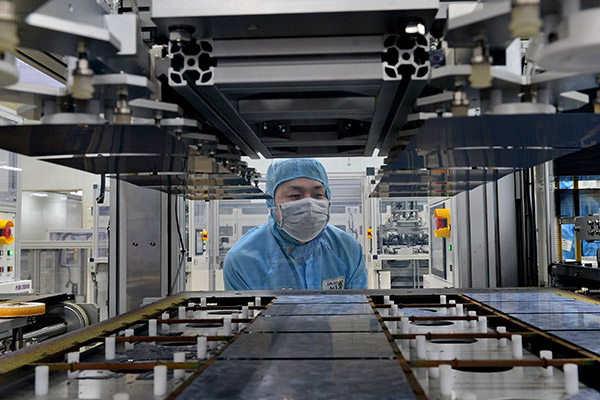
A worker at a plant in Xingtai, North China's Hebei province, Jan 25, 2017. (Photo/Xinhua)
The 6.9 percent economic growth China recorded in the first quarter of this year beat market expectations. Before the figure was released by the National Bureau of Statistics on Monday, many analysts had expected the economy to expand 6.8 percent in the January-March period, the same rate as in the last quarter of 2016.
The slightly improved figure results from many factors, including increased government infrastructure spending, a booming housing market, robust industrial output, a rebound in exports and strong retail sales.
The impressive performance in the first quarter lays a good foundation for the government to achieve this year's annual growth target of around 6.5 percent.
It should also help allay concerns that China's economy might be heading for a hard-landing, as some international analysts have forecast, citing weak external demand, contracting manufacturing activities and surging government debts.
That worry, though far from reality, is understandable given that China has been the engine that has powered the global economy for many years.
However, the doomsayers overlook the resilience of China's economy. As the first quarter's economic performance signals, China's growth remains stable, and its transition away from low-end manufacturing and investment-led expansion to a higher position in the global production chain and domestic consumption as a growth driver, is well on track.
There is still the need to keep a close eye on the situation both at home and abroad, though, as challenges remain from the complicated external environment and domestic structural problems.
For instance, as the government steps in to rein in the property market that shows signs of overheating and tighten bank lending policies, the effect of cheap credit to propel growth will diminish.
And there are hard tasks ahead. The government has to continue cutting overcapacity, reducing inventory, eliminating money-losing "zombie enterprises" and encouraging innovation to make the country's economy more sustainable.
So rather than relying on debt-fuelled stimulus, more efforts have to be made to release the dividends of reform and the potential of domestic consumer spending to drive growth.
The 7 percent growth in disposable income in the first quarter, the fastest since the end of 2015, highlights the strong endogenous consumption potential.
The better-than-expected growth provides a good springboard to continue to pursue a growth model that relies on consumption, services and innovation, rather than investment and exports. This will make China's economy even more sustainable, and ensure more balanced and healthy growth that benefits all.


















































